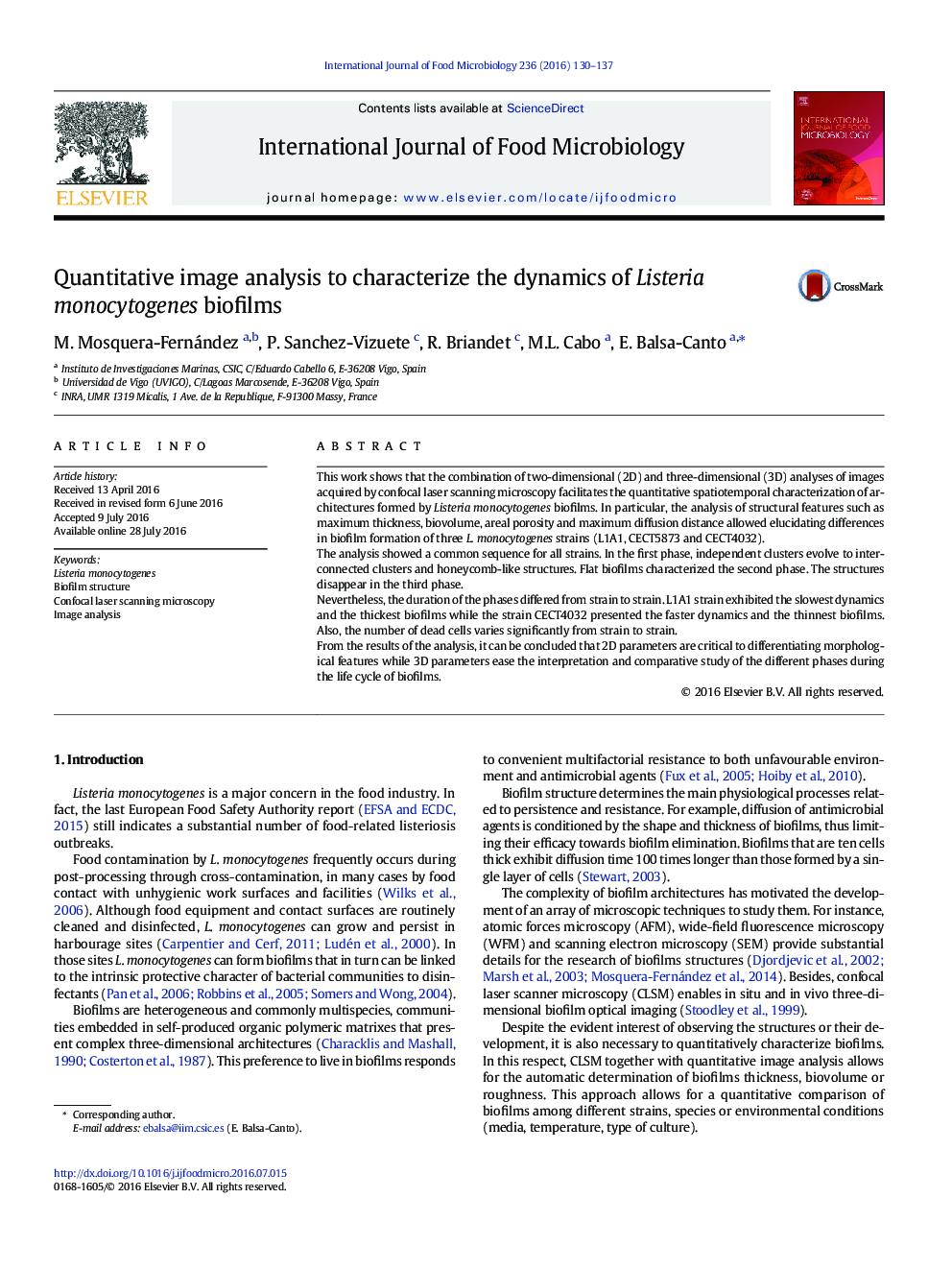| Article ID | Journal | Published Year | Pages | File Type |
|---|---|---|---|---|
| 4366253 | International Journal of Food Microbiology | 2016 | 8 Pages |
•2D and 3D quantitative image analyses allow characterizing the dynamics of biofilms.•2D parameters identify structures and appearance and location of dead cells.•3D parameters evaluate thickness and biovolume facilitating life cycle studies.•Three Listeria monocytogenes strains follow common patterns during life cycle.•Magnitude and duration of patterns are different: the role of time is critical.
This work shows that the combination of two-dimensional (2D) and three-dimensional (3D) analyses of images acquired by confocal laser scanning microscopy facilitates the quantitative spatiotemporal characterization of architectures formed by Listeria monocytogenes biofilms. In particular, the analysis of structural features such as maximum thickness, biovolume, areal porosity and maximum diffusion distance allowed elucidating differences in biofilm formation of three L. monocytogenes strains (L1A1, CECT5873 and CECT4032).The analysis showed a common sequence for all strains. In the first phase, independent clusters evolve to interconnected clusters and honeycomb-like structures. Flat biofilms characterized the second phase. The structures disappear in the third phase.Nevertheless, the duration of the phases differed from strain to strain. L1A1 strain exhibited the slowest dynamics and the thickest biofilms while the strain CECT4032 presented the faster dynamics and the thinnest biofilms. Also, the number of dead cells varies significantly from strain to strain.From the results of the analysis, it can be concluded that 2D parameters are critical to differentiating morphological features while 3D parameters ease the interpretation and comparative study of the different phases during the life cycle of biofilms.
